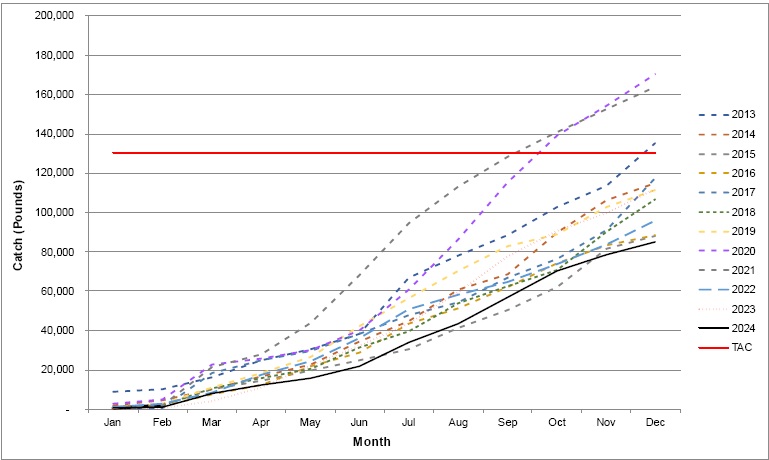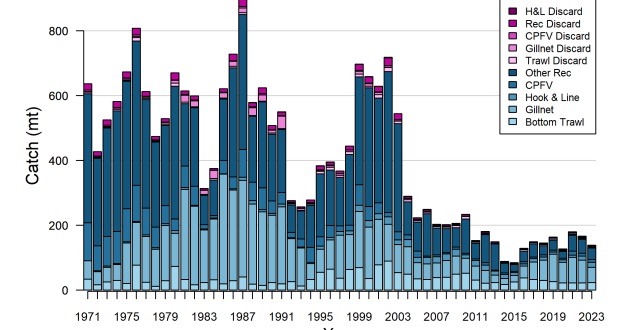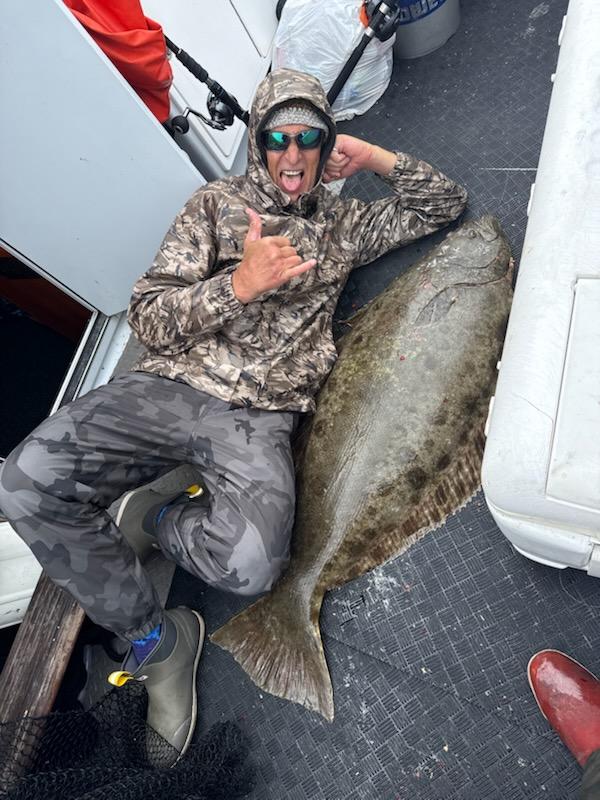Halibut fair and growing, current regs working
BY MERIT McCREA
SEAL BEACH – The stock assessment team of the California Department of Fish and wildlife lead by Julia Coates has completed the stock assessment of California halibut in Southern California and it has just completed its full scientific review for suitability in management.
Results are usually measured in terms of the fraction of the stocks virgin biomass and current catch rate as it relates to output. The standard for west coast flatfish is a biomass target of 25% with a minimum size of 12.5% Below that minimum the population’s productivity of new fish starts to fall precipitously. Above it and the productivity gently falls off with increasing numbers. The goal is to keep numbers close to the maximum productivity but on the side of it where more catch generates more productivity rather than less.
The assessment result showed that the biomass was above that maximum productivity line by a little but not by much, at 14% of unfished. This was still a bit lower than the desired 25% target. However, our SoCal catch rates were considerably lower than the target catch rate and should result in a strongly growing biomass.
Bottom line is the current bag limit and year-round season is working to allow halibut numbers to increase toward the target biomass for the waters south of Point Conception.
The best part of this result is it comports well with what we’re seeing on the water. Fishing for halibut is far from wide-open but it’s getting better with each season, more and larger fish.
In coming days managers will set catch limits that we will fish under, yet it seems clear we are already catching below whatever those numbers of pounds will be.

ELEVEN YEARS OF CATCH HISTORY for California sheephead by month. The recreational allotment of 130,300 pounds is denoted by the red horizontal
line. FIGURE COURTESY OF THE CALIFORNIA DEPARTMENT OF FISH AND WILDLIFE, DATA FROM RecFIN, 2025
Recreational sheephead landing estimates for 2024 lowest in a decade
Catch numbers stay under the TAC for third year in a row
SEAL BEACH – All of our federally managed fisheries and many of our state fisheries, including sheephead, are managed to a total allowable catch or TAC. This can be a shared one among recreational and commercial sectors, or divided into individual TACs. California sheephead have a combined TAC of 205,500 pounds with 130,300 pounds of that going to the semi-formal recreational TAC.
Recreational bag limits and season length, as well as commercial “trip limits” are set to achieve but not exceed their TACs. If and when they do, the respective season is closed early.
A recent report hot off the CDFW presses shows that the estimated catch of sheephead in 2024 finished up at 84,916 pounds or 65% of the recreational TAC. Since 2022 the recreational catch has been well below the recreational TAC.
However in 2020 and 2021 our catches were far in excess of our allotment, at close to 170,000 and 165,000 pounds respectively. Not only did this blow through our allotment but it used up a all the unused commercial allocation and blew through the combined TAC too. But by the time the monthly catch estimates showing it came in it was too late to close the season to keep it from happening.
The bag limit was reduced from 5 fish to 2 fish per angler in 2023, with a 10-month season – March 1 to December 31.
Perhaps there is room under the TAC to add a month to the season or bump the bag limit, but we will have to wait and see. Certainly a switch from paper log books and surveys to fully digital would add the ability to get estimates in real time, reducing the need to leave so much space between the projected catch and the TAC.




